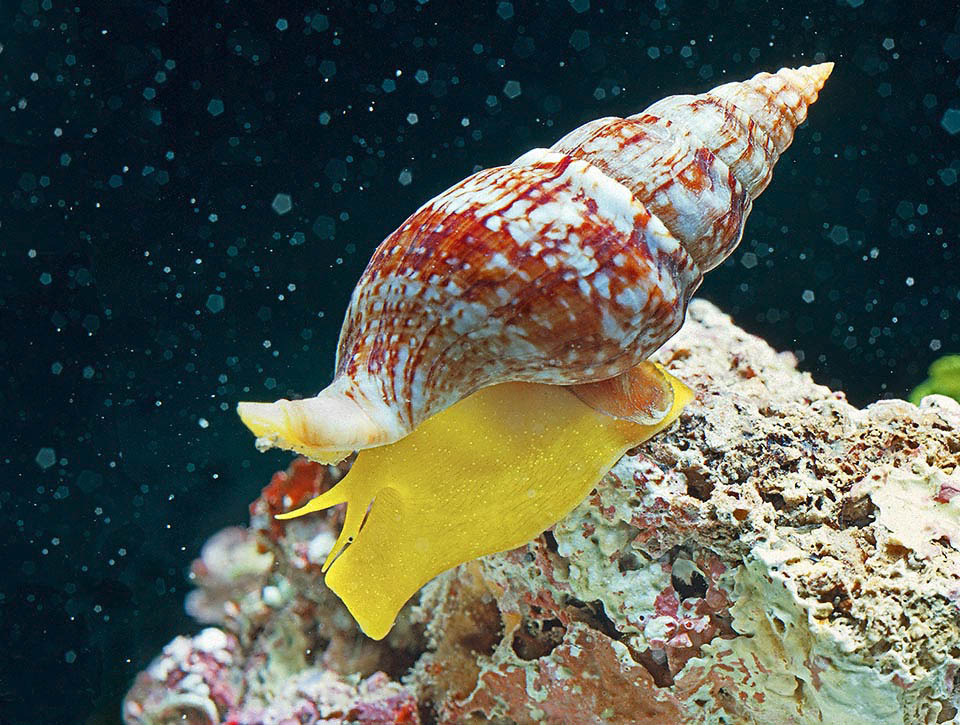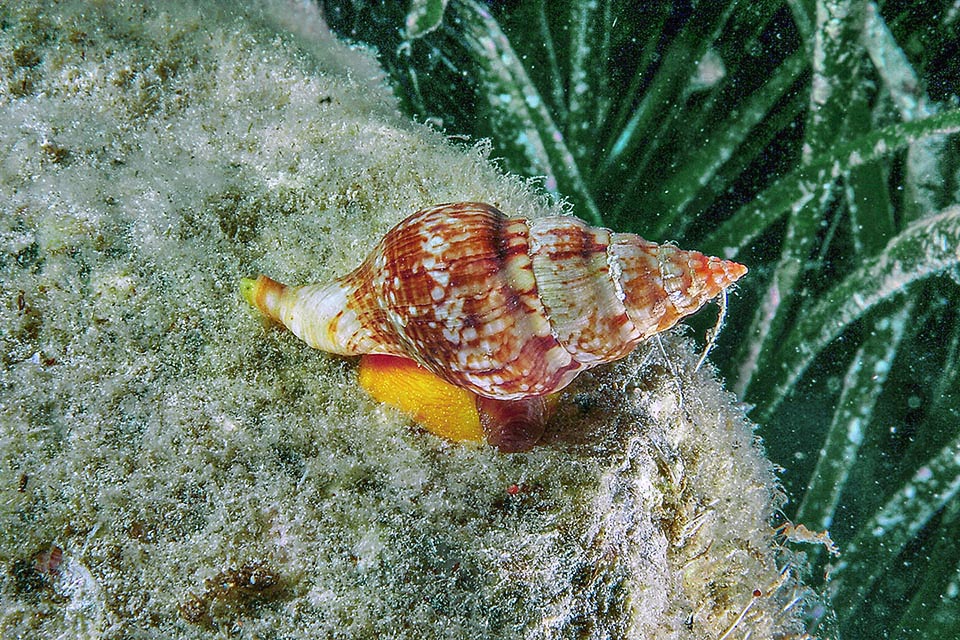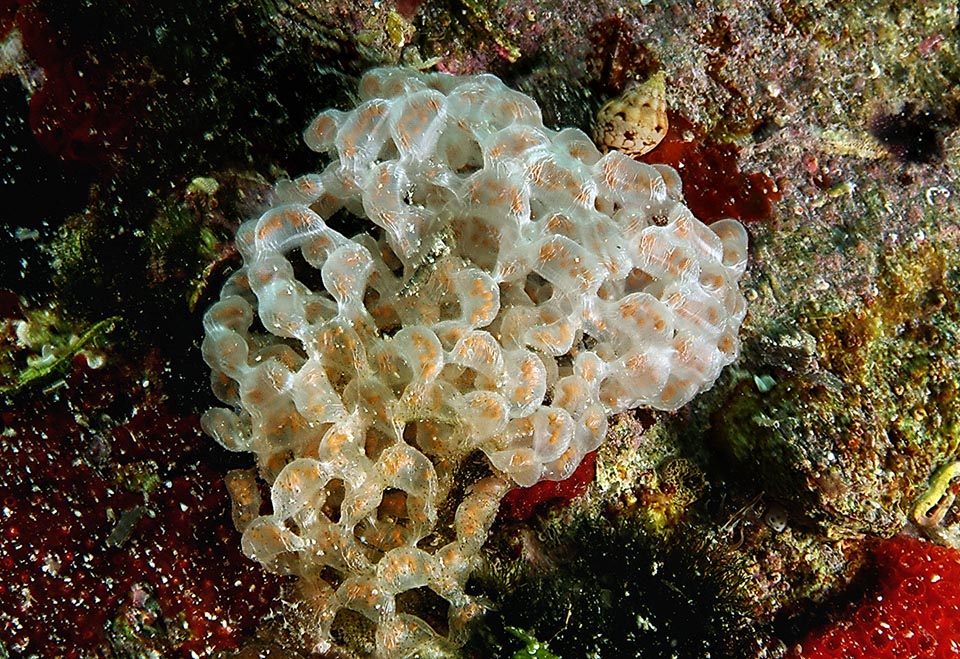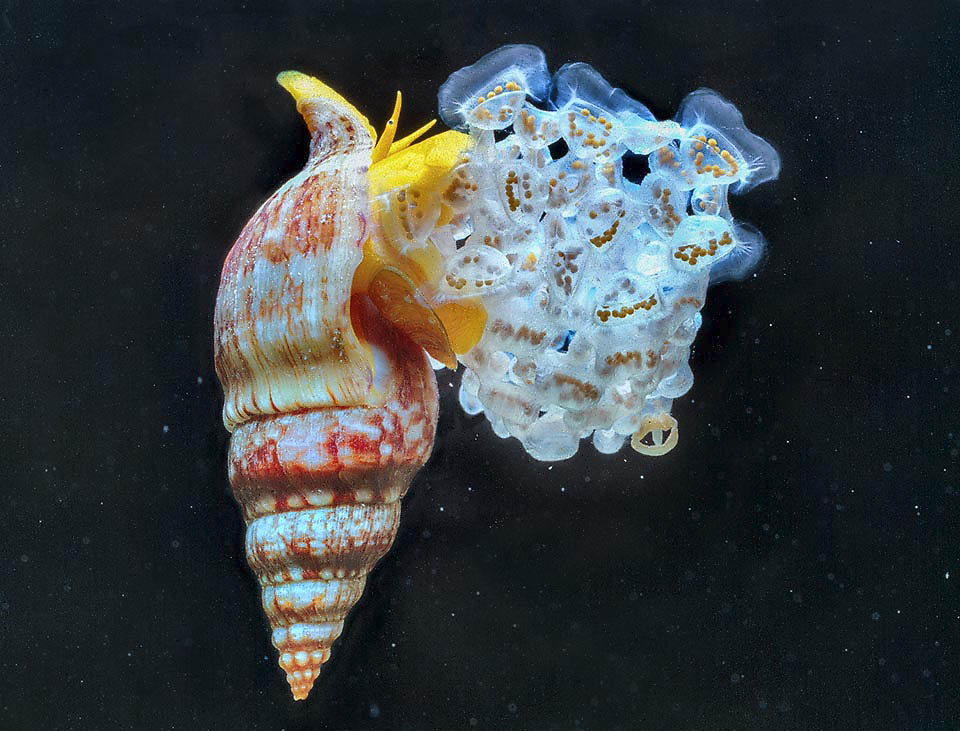Family : Buccinidae

Text © Dr Domenico Pacifici

English translation by Mario Beltramini

Endemic to Mediterranean, Euthria cornea has a lively yellow orange body. It moves under stones and among the rocks eating small bivalves it opens with its strong foot © Giuseppe Mazza
The family Buccinidae represents one of the families with higher geographical dispersion and includes the largest gastropods of the planet.
It is known since the earliest Cretaceous and contains more than 1500 exclusively carnivorous species and 6 subfamilies. Some are active predators; others are sweepers that explore the surrounding environment eating what they find.
Euthria cornea Linnaeus, 1758 is a mollusk that for a long time has been the first and only member of the genus Euthria, yore frequently mistaken with the genus Buccinulum Deshayes, 1830.
The etymology of Euthria is unknown, born maybe from a common name, whilst the specific epithet cornea, from the Latin “corneus” = horny, clearly refers to the shape of the shell.

The shell is adorned by brown patterns, very variable, on a pale grey background. Sharp, with just hinted spirals, it can reach 7 cm of length © Antonio Colacino
Zoogeography
This species is present all over the Mediterranean, particularly along the southern coasts of Spain and France, in the waters of Algeria and Malta, in Greece and in the Italian region of Puglia, has been found also in the waters of the Black Sea and in the Atlantic Ocean off the coasts of Morocco and Portugal.
Ecology-Habitat
Euthria cornea is a predator of bivalve mollusk but can, in case of food shortage, eat remains of fishes and crustaceans found while looking around. Unlike other species that punch the shell of the bivalves, Euthria cornea utilizes its mighty foot for forcing the shells inserting the head inside, where it will be able to suck on the soft tissues of the prey.

Several females’ eggs on the bottom. They are fused in small 1 cm capsules glued each other, to form a spongy mass of about 5-10 cm of diameter © Antonio Colacino
It is an animal that does not like low temperatures and keeps always within the 30 m of depth, finding home and protection in the rocky bottoms where the availability of prey it loves is usually abundant.
Morphophysiology
Certainly, the most striking feature of this fascinating, though tiny, gastropod is the lively yellow orange colour of its body. The head has two sensory tentacles, each with a black eye, whilst in the rear part of the body the large foot can completely close the opening of the shell with a solid operculum when the animal retracts inside, to protect itself from the predators. Breathing is entrusted to a comb-shaped internal gill.
The shell has a fusiform structure with slightly accentuated spirals and reaches a maximum length of 70 mm. The colours are variable and it displays irregular brown patterns covering a white beige or grey brown background.

This female spawns on an aquarium glass. The embryos assume a tiny structure called “veliger”, with a hint of a shell and a preoral laminar expansion that conveys on the mouth particles of food remaining suspended in the water. They live planktonic for several months before effecting metamorphosis and becoming adults © Giuseppe Mazza
Ethology-Reproductive Biology
The informations we have about the reproduction of Euthria cornea are unfortunately very scarce. The females gather at the time of laying the eggs, contained in small capsules glued together on top of each other to form a spongy mass of about 50-100 mm of diameter.
The embryos develop in “veliger”, a larval stage characteristic to the gastropods and the bivalves, characterized by a small shell, by the foot and by the “velum”, a preoral laminar expansion useful for conveying the food particles to the mouth and to remain suspended in the water. They carry on planktonic life for some time, even several months, before metamorphosizing and become adults.
Synonyms
Buccinulum corneum Linnaeus, 1758; Euthria gracilis Locard, 1891; Euthria major Locard, 1891; Euthria minor var. elongata Locard, 1886; Fusus conulus Risso, 1826; Fusus lignarius Lamarck, 1816; Murex corneus Linnaeus, 1758; Purpura alba Risso, 1826.
→ To appreciate the biodiversity within the MOLLUSCS please click here.
